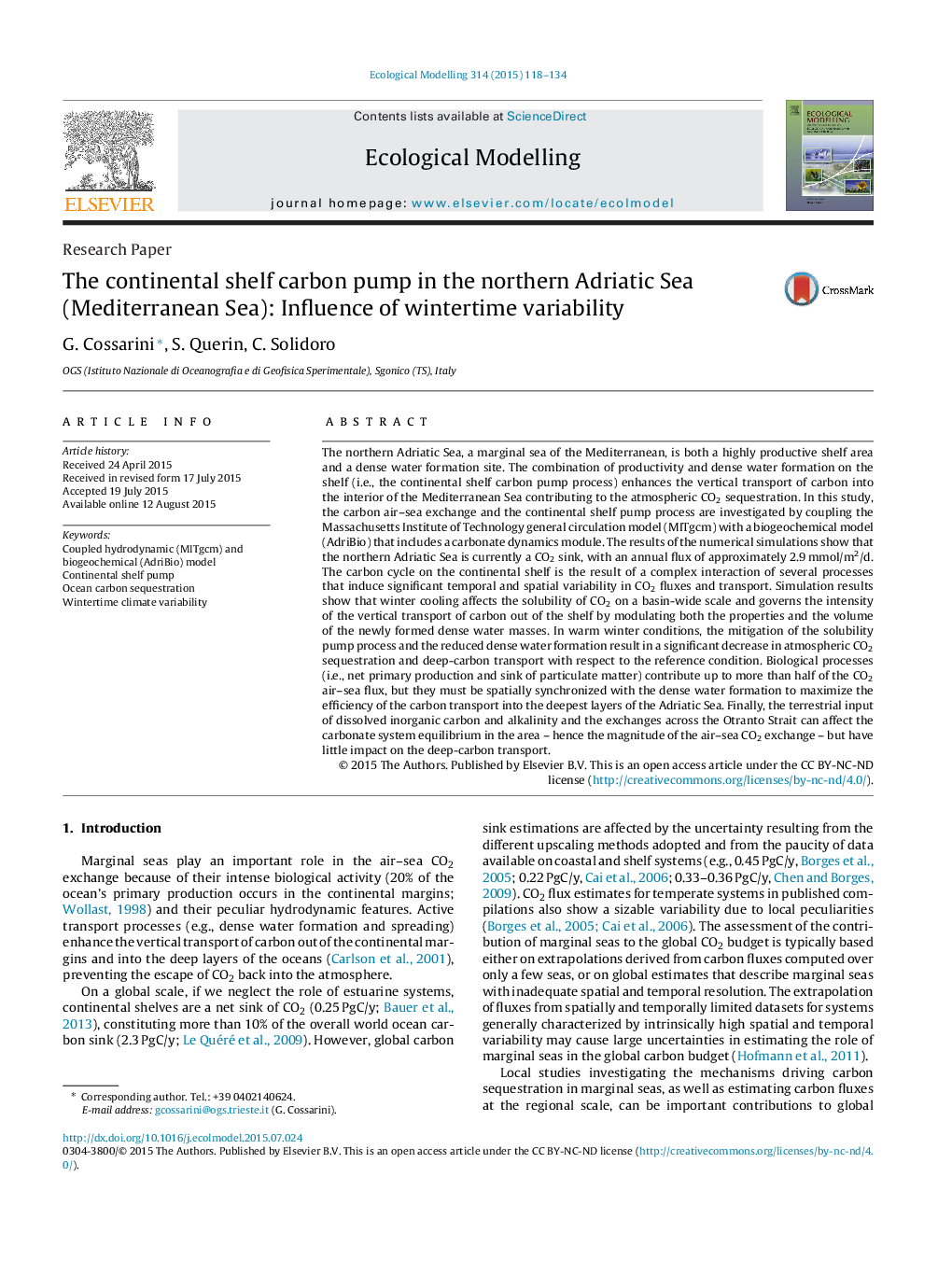| Article ID | Journal | Published Year | Pages | File Type |
|---|---|---|---|---|
| 6296508 | Ecological Modelling | 2015 | 17 Pages |
Abstract
The northern Adriatic Sea, a marginal sea of the Mediterranean, is both a highly productive shelf area and a dense water formation site. The combination of productivity and dense water formation on the shelf (i.e., the continental shelf carbon pump process) enhances the vertical transport of carbon into the interior of the Mediterranean Sea contributing to the atmospheric CO2 sequestration. In this study, the carbon air-sea exchange and the continental shelf pump process are investigated by coupling the Massachusetts Institute of Technology general circulation model (MITgcm) with a biogeochemical model (AdriBio) that includes a carbonate dynamics module. The results of the numerical simulations show that the northern Adriatic Sea is currently a CO2 sink, with an annual flux of approximately 2.9Â mmol/m2/d. The carbon cycle on the continental shelf is the result of a complex interaction of several processes that induce significant temporal and spatial variability in CO2 fluxes and transport. Simulation results show that winter cooling affects the solubility of CO2 on a basin-wide scale and governs the intensity of the vertical transport of carbon out of the shelf by modulating both the properties and the volume of the newly formed dense water masses. In warm winter conditions, the mitigation of the solubility pump process and the reduced dense water formation result in a significant decrease in atmospheric CO2 sequestration and deep-carbon transport with respect to the reference condition. Biological processes (i.e., net primary production and sink of particulate matter) contribute up to more than half of the CO2 air-sea flux, but they must be spatially synchronized with the dense water formation to maximize the efficiency of the carbon transport into the deepest layers of the Adriatic Sea. Finally, the terrestrial input of dissolved inorganic carbon and alkalinity and the exchanges across the Otranto Strait can affect the carbonate system equilibrium in the area - hence the magnitude of the air-sea CO2 exchange - but have little impact on the deep-carbon transport.
Related Topics
Life Sciences
Agricultural and Biological Sciences
Ecology, Evolution, Behavior and Systematics
Authors
G. Cossarini, S. Querin, C. Solidoro,
